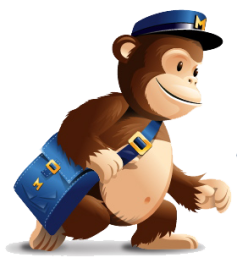About two years ago I was sending out a newsletter sporadically, with no real focus to it except my own news. Needless to say, I did not get a lot of subscribers. Actually, maybe I do need to say. Remember the post I wrote about thinking globally? Why would anyone want to only read about me when it’s much more interesting to read about lots of authors and illustrators?
But I wasn’t thinking that in those days. I didn’t know what else to write about!
I have to credit my husband. He said, “Don’t stop sending the newsletters. Why not follow up your appearance on Good Morning, CT, with a newsletter, and include the video?” Then I realized I could also include information about the books I was bringing on the show. I started including links and secrets from the creators of those books, too.
 Now needless to say, subscriber numbers rose. I just started using MailChimp, which took me a bit of getting used to, but I like it. It’s an attractive interface, and easy to use. Plus it offers a lot that my last service didn’t. For one thing, it’s free for up to 2,000 subscribers! (I should say 2,000 emails, so if you send one newsletter per month, and you have 2,000 or fewer subscribers, you can send it free).
Now needless to say, subscriber numbers rose. I just started using MailChimp, which took me a bit of getting used to, but I like it. It’s an attractive interface, and easy to use. Plus it offers a lot that my last service didn’t. For one thing, it’s free for up to 2,000 subscribers! (I should say 2,000 emails, so if you send one newsletter per month, and you have 2,000 or fewer subscribers, you can send it free).
I follow the former publisher of Writer’s Digest, Jane Friedman, on Twitter. I learned about her newsletter and tweeted her, “Why would someone of your stature and this stage of your career start a newsletter?” I loved her answer. She wrote back to me the following (and by the way, I wrote the above about MailChimp before Jane wrote me back):
“Being able to directly reach your readers (or most avid fans) is a powerful capability that every author should have. Some authors like to use—and are very successful with—Facebook, Twitter, and other online communities to build audience, but when it comes to online marketing, e-mail is still the most successful and profitable means of interacting with your readership. It’s also a tool that you own and isn’t subject to the whims of some other organization or corporation.
“Unfortunately, e-mail marketing is probably the No. 1 overlooked means of reader engagement when authors are considering their overall platform. But it’s not hard to get started. All you need to do is sign up with a service like MailChimp, ConstantContact, or AWeber, then publicize the newsletter sign-up link or form. (I like MailChimp because the interface is very friendly and intuitive, and it’s free to get started.)
“Sending valuable content via e-mail is a way to keep readers updated on what’s happening, offer valuable or specialized content—because these will be your most engaged fans—and also gather direct feedback on questions or projects. It is NOT a way to conveniently spam people or overburden them with marketing messages! Treat the medium with respect and care, and you’ll see your readership grow.”
I am very careful about not sending out more than one newsletter per month. I do include information about my podcast, what episodes were published over the course of the last month, and feedback from fans. So I’m getting publicized, but through my marketing other people. I link everyone who sends me feedback, if I include their comment. I spotlight authors, and in return, I hope they will publicize that they’re in my newsletter, providing links on their site, or retweet the announcement. Some people do, and some don’t. It’s not a requirement, certainly, but it’s a nice bit of reciprocity if they do. And it is good marketing, not only for my efforts, but exponentially more people will learn about them and their books.
Now this new book is just hitting the shelves and for the first time in the two years that I’ve been sending out a newsletter, I’m planning an announcement, which will highlight the drawings and contests I’ll be holding. Sign up, so you can join in the fun!


